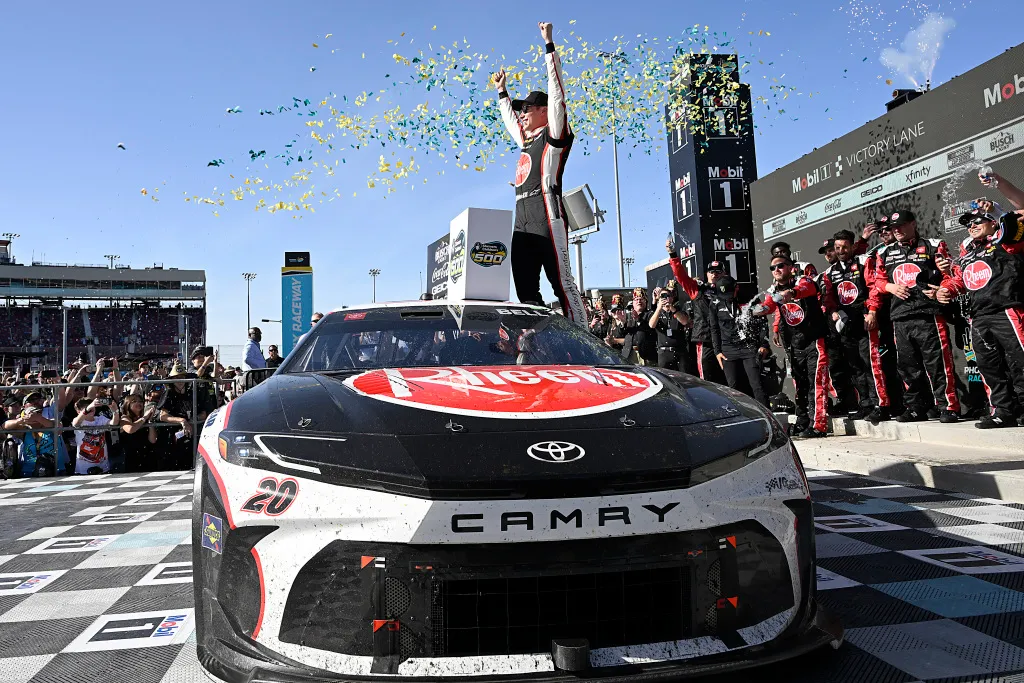In the existing playoff structure, a driver’s success at Phoenix hinges on either winning or performing exceptionally well, often involving leading laps. However, Toyota has struggled in this regard over the past two years, with their drivers leading a mere 15 laps across four races, while Chevrolet and Ford drivers have claimed victory.
This trend took a significant turn on Sunday, with Toyota securing a commanding victory thanks to a stellar performance by Bell and his No. 20 Joe Gibbs Racing team. Toyota drivers collectively dominated the race, leading all but 14 of the 312 laps, marking a remarkable shift in their performance.
This triumph holds particular significance for Toyota as it marks their first win with the new Camry body, a fact not lost on Toyota Racing Development president, David Wilson. He emphasized the collaborative effort behind this success, praising the contributions of the Joe Gibbs organization, TRD USA, and Calty Design.

Wilson also emphasized the importance of maintaining perspective in the face of victory, acknowledging that longevity in motorsports requires resilience in both success and failure. Despite the win, he remained focused on the upcoming challenges, recognizing that the racing calendar moves swiftly.
The debut of new Camry and Mustang race cars by TRD and Ford Performance respectively had seen Chevrolet drivers clinching victories in the season’s initial races.
However, triumph at Phoenix holds added significance given its hosting of the series championship race and the introduction of NASCAR’s new aero package for short track/road course races.
Sunday’s outcome, with Toyota drivers claiming top positions and dominating laps, augurs well for the manufacturer moving forward. Bell’s secured playoff berth and the presence of five other Toyota drivers in the top 16 of the series standings further underscores their competitive strength.
Wilson highlighted the collaborative efforts between TRD USA and Joe Gibbs Racing in developing the new body but cautioned against complacency, noting that success on paper doesn’t always translate to success on the track.
With a diverse range of tracks still ahead, including intermediate and short tracks, the true measure of Toyota’s performance is yet to be determined.

